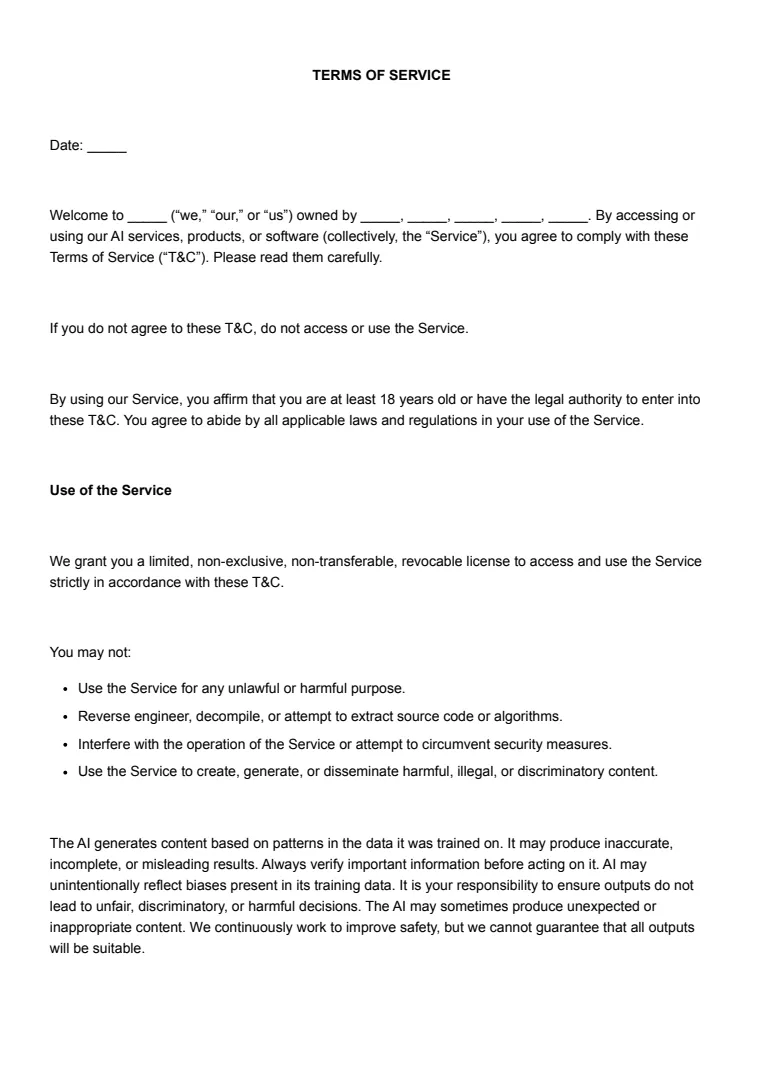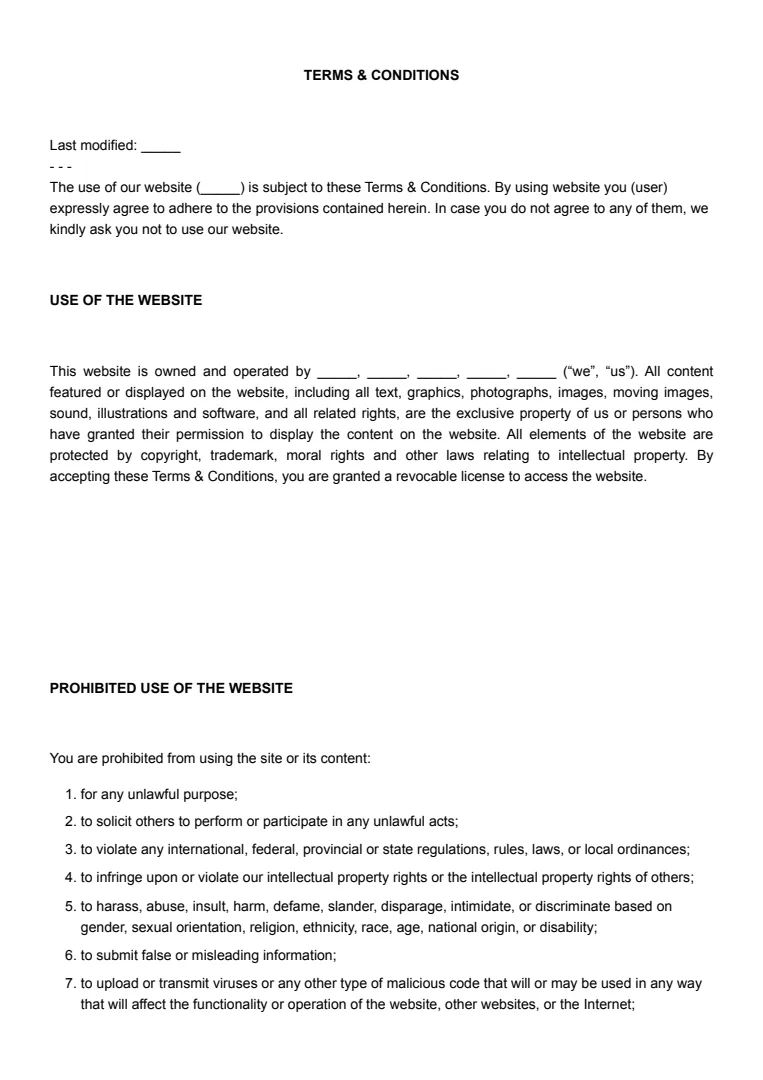What Are Terms and Conditions?
Terms and conditions, also known as terms of use or terms of service, are vital in defining the relationship between you and your service users. Think of them as a legal contract that sets the rules you expect your users to follow when interacting with your business, website or app.
These agreements outline essential elements like user rights, responsibilities, and what happens if someone breaches the terms. They protect your business by clearly stating what users can and cannot do, helping to avoid misunderstandings.
Your Terms and Conditions Agreement should cover key points, such as intellectual property rights, dispute resolution, and limitation of liability. This ensures both parties know their obligations, making resolving any issues that might arise easier.
Including legal policies in your terms helps your business comply with relevant laws and regulations. For instance, you might need a privacy policy to inform users how their data is collected and used.
While writing these documents, use straightforward language so that users easily understand what's expected of them.
Remember, though, that certain legalese may be necessary to cover all bases.
You can organise the content using bullet points or numbered lists to make it more readable. This structure can help users quickly find specific information, such as return policies or payment terms.
Keep your terms up-to-date; laws and business practices change, and your terms should reflect these updates to continue providing clear guidance. Doing so protects both your business and your users, fostering a trustworthy relationship.
When Is a Terms and Conditions Needed?
If you have an e-commerce website, you definitely need terms and conditions. They set out the rules for buying and selling on your platform. This helps prevent disputes by making sure everyone knows their rights and responsibilities.
Are you handling user data? The GDPR requires you to be transparent about data collection and usage. Terms and conditions should outline how you comply with this regulation. This builds trust and keeps you compliant with privacy laws.
Are you launching a mobile app? Terms and conditions are essential when your app involves transactions, user interaction, or user-generated content. They establish usage rights and set expectations for both you and the user.
Are you engaging in contractual services? Terms and conditions create a clear agreement about service provision, timelines, and payment. This helps avoid misunderstandings and protects your business.
Terms and conditions are essential if you want to protect your intellectual property. They prevent users from misusing your content, designs, or products, ensuring your work is safeguarded.
Online communities and platforms require terms and conditions to lay out behaviour guidelines. This keeps your platform respectful and welcoming while providing a framework for moderating user activity.
When you need to address specific refund policies or warranties, include them in your terms and conditions. This clarifies what customers can expect and under what circumstances they can return products.
Are you creating a members-only area? Use terms and conditions to specify access requirements and any membership fees, ensuring clear communication about what members receive.
How to Write a Terms and Conditions
Creating a terms and conditions document is essential in defining the rules and responsibilities between you and your users or clients.
This guide breaks down the process into simple steps, helping you confidently navigate this task.
Step 1: Identify the Purpose
First, understand why you're writing the document. Terms and conditions form the backbone of business contracts and set the ground rules for using your service or product.
Be clear about whether your terms and conditions apply to a website, an app, or another type of service.
Step 2: Use a Template
To start, consider using a terms and conditions template. Free samples can provide a solid foundation, outlining standard clauses you can then customise to suit your needs.
Look for reputable sources or a terms and conditions generator to find the right one for you.
Step 3: Draft Key Sections
Break down the terms into clear sections such as privacy policy, payment terms, and warranties.
If your service collects personal data, include a privacy policy to inform users about data handling. For software, an End User Licence Agreement (EULA) might be relevant.
Step 4: Customise for Your Business
Make sure your terms reflect the specific nature of your business. Adapt standard templates to fit your particular services, ensuring they highlight unique policies like cancellation or refund terms.
If necessary, consult a legal professional, such as a terms and conditions lawyer, for complex elements.
Step 5: Review and Adapt
Once drafted, review the terms regularly. As your business grows or changes, update the document to remain compliant and relevant.
An outdated agreement might not protect you adequately or might conflict with current laws or business practices.
By following these steps, you can develop terms and conditions that are not only robust but also straightforward for users to understand, fostering a transparent relationship with your customers.













